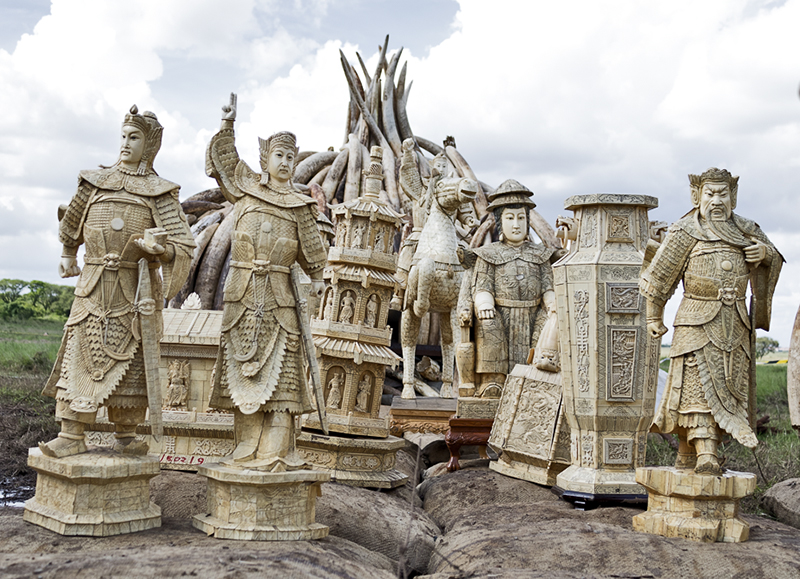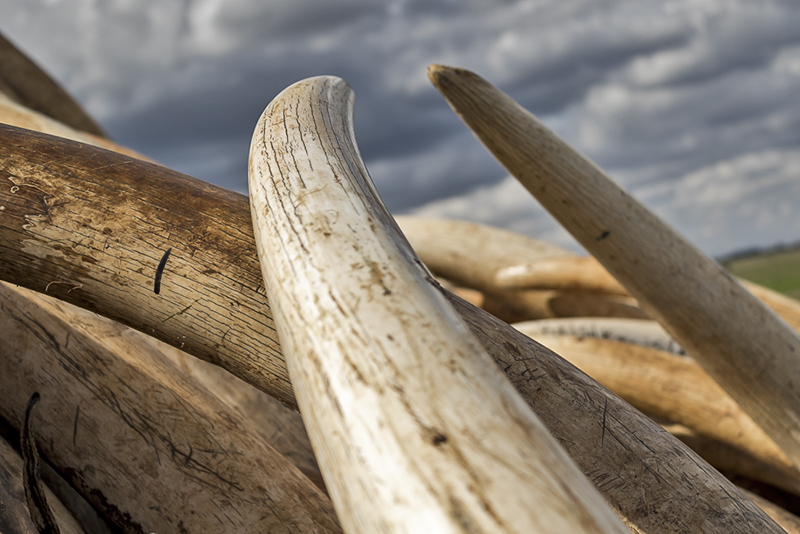What is the Ivory Burning
April 30th, 2016 went down as another sad historical date in Kenyan history. Our current Kenyan President, Uhuru Kenyatta, sent a very strong message to the world that Kenya will not tolerate and benefit from our poached animals, by setting alight the bulk of Kenya’s stockpile of ivory. 105 tonnes of Elephant Tusks (equating to about 8,000 elephants), 1.35 tonnes of Rhino horn (approximately 250 rhinos), and various other poached items, such as Lion skins, Leopard skins, and more were torched on this historic occasion at the Nairobi National Park. The remaining 17 tonnes of ivory are the biggest and heaviest tusks, which will be kept aside for research, to be displayed in our museums and for historical purposes.
The historical burn follows the inaugural “Giants Club Summit”, which brought together a number of African Heads of States, Conservationists and Key Business and Social Leaders to discuss various conservation issues, and in particular the protection of elephants and their landscapes.
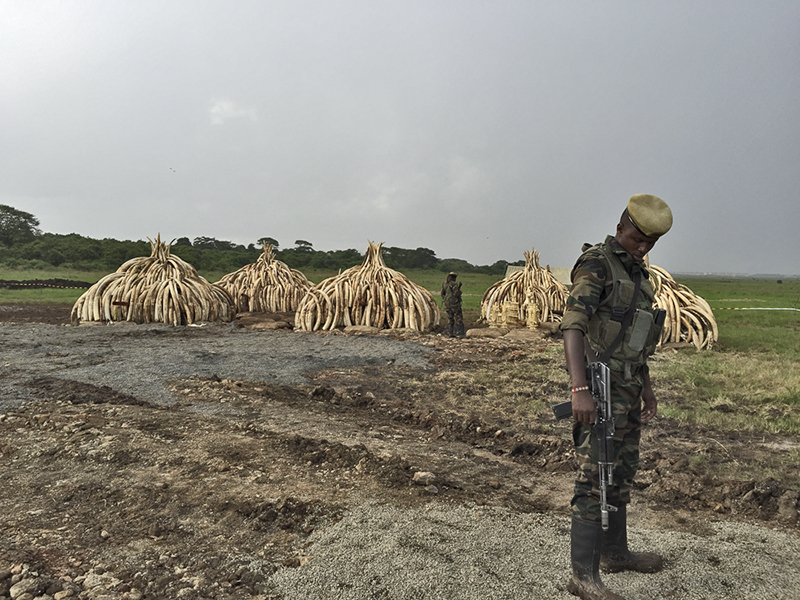
History of Ivory Burning in Kenya
Although this was the largest Ivory Burn in history, Kenya has, over the decades done many burns to show our commitment to protecting elephants and destroying the price of ivory in the process, turning it into worthless ash and dust.
Ex-President Daniel Arap Moi presided over the first two ivory burnings, which were the brainchild of Dr. Richard Leakey, who served as the head of the Kenya Wildlife Service (KWS) at the time. The first burning took place in 1989, and 12 tonnes of ivory were destroyed. The second burn in 1991 destroyed a further 6.8 tonnes.
Since then each sitting president has conducted an ivory burning to show the world that Kenya will not tolerate poaching. The third ivory burning was presided over by former President Mwai Kibaki who torched 5 tonnes of Ivory in Tsavo.
Current president Uhuru Kenyatta will, on the 30th of April, be conducting his second, and largest, Ivory Burn – the first one of 15 tonnes was done in 2015.
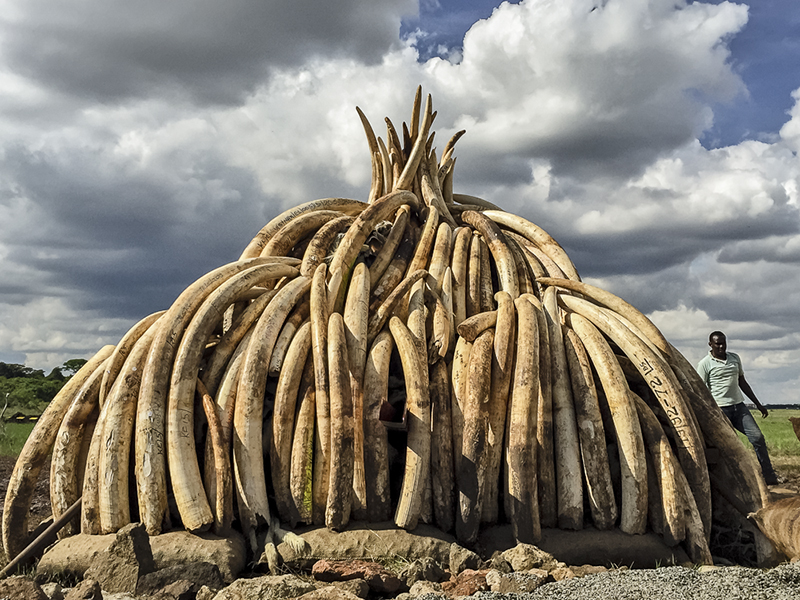
My Personal Account
This is very personal account of my experience visiting the Ivory Burning Site.
On April 26th, 2016 I was invited to the Ivory Burning site to do some photography of the 105 tonnes of Ivory that was being prepared in several pyres to be set alight in the country’s biggest Ivory Burn. I was lucky to also have the opportunity to interview my friend – conservationist Raabia Hawa, who is also the director of the Ulinzi Foundation and Walk with Rangers Program and get her thoughts and views on the Ivory Burn.
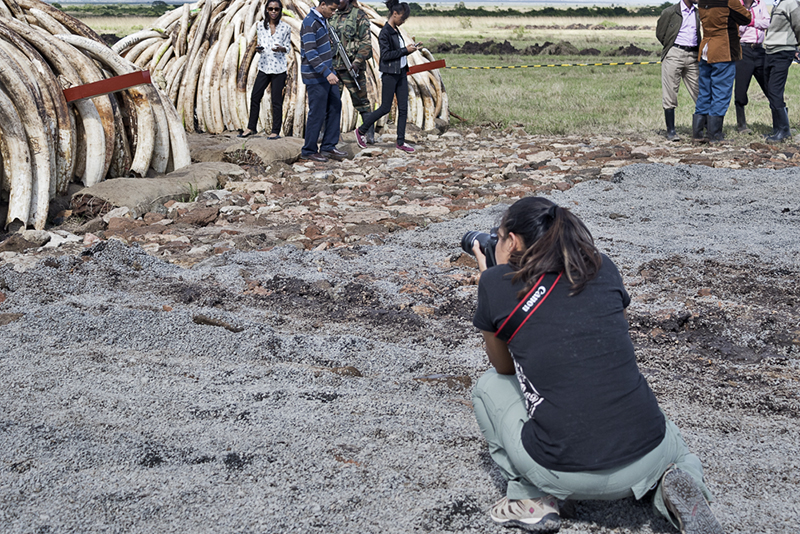
As I approached the Nairobi National Park that afternoon, I had a sense of excitement, to be able to photograph this historical event. When I got into the park and was registering to get into the area, my eyes caught a glimpse of white – at first I thought it was the tents that were set up for the rangers – but no! – it was a big pile of elephant tusks, hundreds stacked one on top of the other in several huge pyres. As I walked towards them the excitement died down and I was overcome with a feeling of sadness. 105 tonnes of elephant tusks divided and piled into 12 pyres only symbolized death! The greed of humanity and our self-consumption has taken down over 8,000 gentle giants and this was now their final resting place.
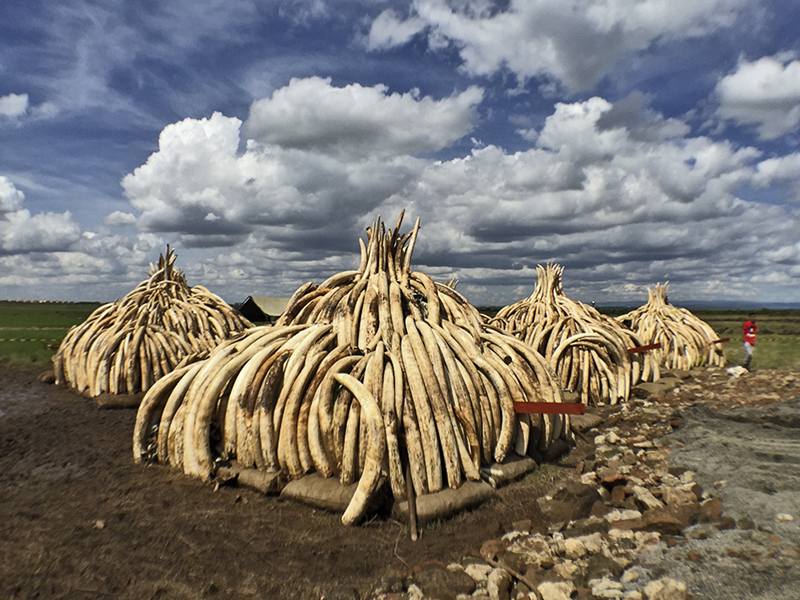
As I left the ivory burning site, storm clouds came rolling in and the heavens opened up onto the 105 tonnes of elephant tusks. I stood at the barrier watching the rain with so many emotions running through my mind and my heart – sadness, failure, and anger. This was a scene that depicted the epic greed and failure of the human race.
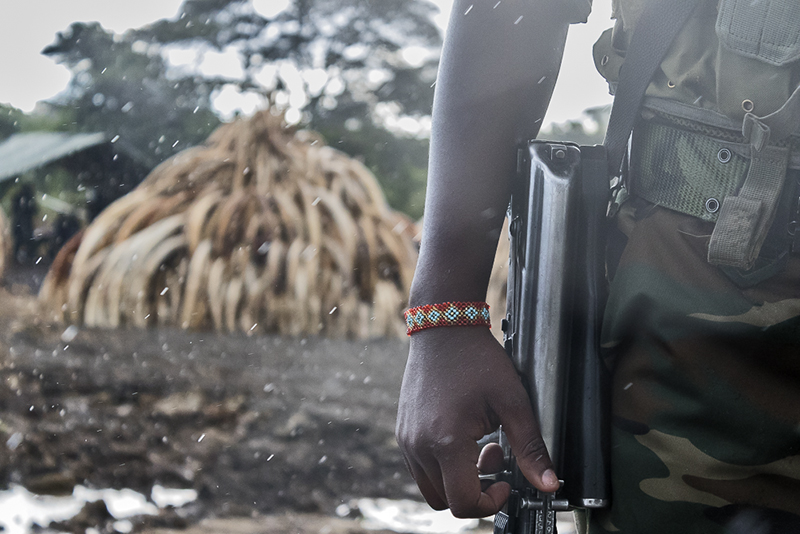
On the 29th, as I flew out of Wilson Airport to the Mara, the plane went straight over the burning site, and I got to say my final goodbye. For those of you who know me, know that my heart and soul belong in the Mara – a place of true serenity – but not this trip. Throughout my days there, my head was not in the Mara. I found myself constantly on social media to find out what was going on, what was happening in Nairobi National Park. It was very unsettling to have such an aching heart in the once place I go to find peace.
On May 1st, as we flew back over the Ngong Hills into Nairobi, I caught a sight of black smoke and as we got closer the smoke looked darker and denser. I found myself quickly going through the five stages of grief before finally accepting the situation at hand.
I can only hope this sends a message loud and clear to the rest of the world, and that we do not ever have to do this again in the future – not only in Kenya but anywhere in the world. Hopefully, this burning serves it purpose of destroying the value of ivory, and ensuring the survival of the species. These vulgar white trinkets of ivory are made from and brutally carved out from these gentle giants, and the senseless killing of elephants for own greed is unacceptable.
